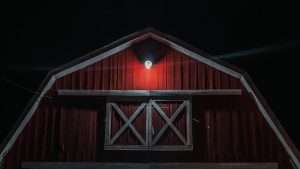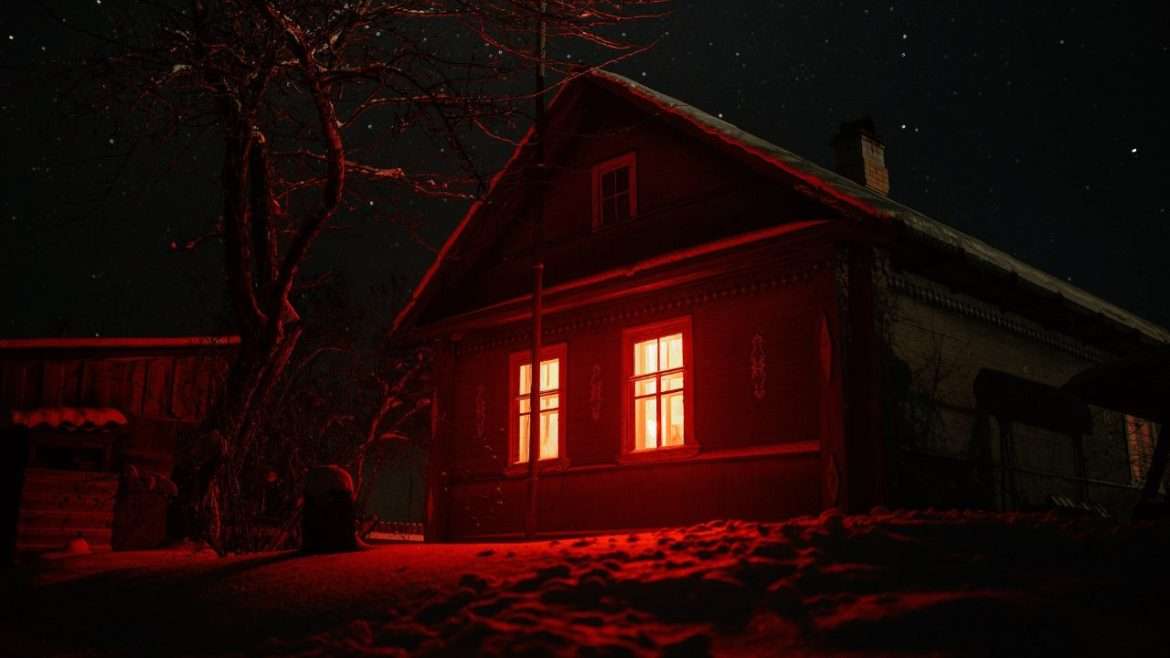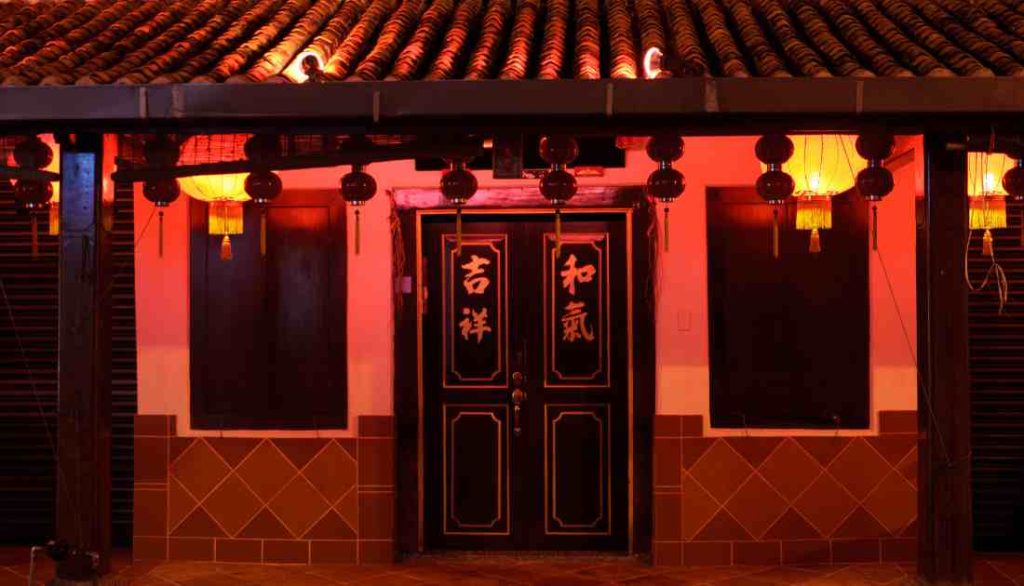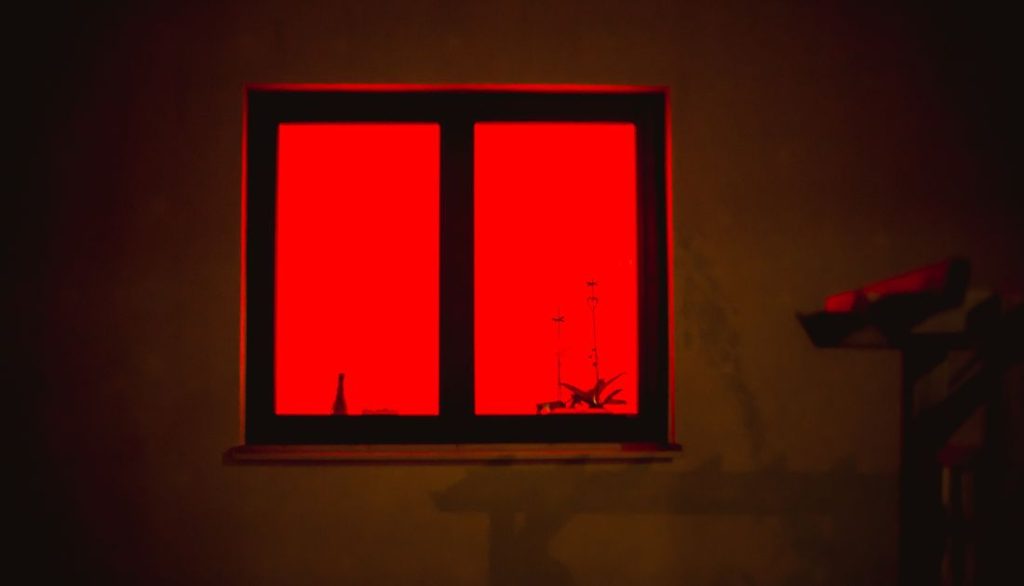Table of Contents
As you drive around your neighborhood, have you ever encountered a house with a red light shining in its window? If so, did you wonder what a red light on a place means or why it was there? Deciphering the meaning of the red light on a home can be confusing and even slightly unsettling. However, understanding its significance is crucial for several reasons.
In this article, we will delve deeper into decoding the red light on a house to help bring clarity to this mysterious symbol and explore why it’s essential to know about it.
The Origins Of The Red Light Tradition
The red light tradition’s origins can get traced back to ancient times when red was considered a symbol of love and passion. During this time, it was typical for courtesans, or high-class prostitutes, to display a red lantern outside their homes as a sign that they were available for business.
As prostitution became more regulated throughout history, red lights evolved into signalling specific services available in certain establishments.
Today, the tradition continues in various forms around the world.
- In Amsterdam’s famous Red Light District, windows with neon signs indicate whether women are present inside and available for hire.
- In Japan’s Yoshiwara district during the Edo period (1600-1868), the red cloth was hung outside brothels to indicate that women were “working” there.
- Some might associate red lights with unsavory activities such as prostitution and human trafficking. It is essential to recognize that many businesses also use them innocuously for branding purposes or simply as decorative lighting.
Understanding the context of a red light on a house can help erase confusion and dispel any negative stereotypes associated with its usage today.
The Different Types Of Red Lights On Houses
Several different types of red lights can be seen in houses, each with a unique meaning.
- The first type is the emergency services light, which is often displayed by police officers or firefighters when responding to an emergency call. These lights have a steady pulse and get designed to alert bystanders that help is coming.
- The second type of red light commonly found in houses is the security light. These lights can be static or flashing and get installed as part of a home security system. They deter potential intruders since their presence indicates that some form of electronic surveillance protects the house.
- Lastly, some homeowners display decorative red lights outside their homes during special occasions like Halloween or Christmas. These lights add an eerie atmosphere during Halloween festivities while providing warm visual appeal during Christmas celebrations.
Understanding these various types of red lights can bring clarity and peace of mind when viewing them from afar.
The Cultural Significance Of The Red Light Houses
The red light has a deep cultural significance in many parts of the world. In some cultures, it indicates that the house is a brothel or a place where s*x work occurs.
However, this interpretation varies from country to country and region to region. For example, in Japan, a red lantern outside an establishment also signifies that they offer food, drink, and companionship.
In addition to its association with s*x work, the red light can symbolize danger or warning in other contexts. Red lights are used on emergency vehicles such as fire trucks and police cars to indicate urgency and demand attention from others on the road. Similarly, traffic lights use red signals to halt drivers and prevent accidents.
The Legal Implications Of Displaying A Red Light On Houses
Displaying a red light on your house can have important legal implications. In some jurisdictions, showing a red light in your window may be illegal as it is associated with s*x work and solicitation.
If law enforcement suspects that this is the reason for the light, they may investigate further and potentially charge individuals with engaging in prostitution or related crimes. Even if there are no laws against displaying a red light on your property, it can still attract negative attention from neighbors or passersby.
Some people may see this as an indication of criminal activity or other suspicious behavior, which could result in unwanted scrutiny and even harassment. It’s essential to consider these potential consequences before deciding whether or not to display a red light on your property.
Overall, understanding the legal implications of displaying a red light is crucial for avoiding unintended consequences and making informed decisions about how you decorate your home.

The Misconceptions Surrounding The Red Light House
The red light on a house has been shrouded in mystery and many misconceptions. One of the most common myths is that it signifies a brothel or other illicit activity inside the property.
However, this couldn’t be farther from the truth. There are multiple explanations for why someone might choose to display a red light in their window.
One possible reason is for decorative purposes. Some people simply like how a red light looks in their home’s interior design.
Additionally, an illuminated red light can serve as a burglar deterrent by making would-be thieves think twice before attempting to break in.
Lastly, several cultures have used red lamps or candles as symbols of good fortune and spiritual protection throughout history.
While there remains some ambiguity surrounding what exactly the presence of a red light on a house signifies. One thing is clear. It does not necessarily indicate that anything nefarious is occurring within its walls.
The Modern Relevance Of The Red Light On Houses
In today’s society, the red light on a house still holds some relevance, albeit in a much different form than it once did. In the past, these lights were often associated with brothels and other illicit activities.
However, modern interpretations have shifted this symbolism to reflect more specific meanings concerning safety and security. For example, some households may install red exterior lighting as part of their home security systems because it can make them less vulnerable to criminal activity.
Moreover, research suggests that bright outdoor lighting can deter potential burglars or vandals from targeting homes during the night.
Another everyday use for red lights is in nursing homes or assisted living facilities. They are placed outside patients’ room doors who need monitoring throughout the night.
Many bars and clubs also use red light as an aesthetic choice due to its association with nightlife culture and entertainment value. While some people might get taken aback by seeing a red light shining out of a home’s window at first glance, there are multiple reasons why people now utilize these lights. It is from increasing safety measures around their properties to simply decorating for fun.
The Future Of The Red Light Tradition On Houses
The tradition of placing a red light on a house has been around for centuries and holds different meanings depending on the culture and period.
In recent years, it has become associated with the s*x industry, which signifies that an establishment offers s*xual services.
However, some households still display red lights as a symbol of hospitality or to honor their deceased loved ones. As society evolves and attitudes toward s*x work change, it’s unclear what the future holds for this longstanding tradition. Some countries have already legalized prostitution which means the need for discreet advertising could decrease over time.
Additionally, individuals may find new ways to advertise their services through more modern forms of communication. It includes such as social media platforms rather than relying on physical symbols like red lights. Only time can tell how this practice will continue to evolve in the future.
Red Light Effect On Health
Exposure to red light at night can disrupt our natural sleep-wake cycle, also known as circadian rhythm. This disruption can lead to difficulties falling asleep and getting restful sleep, affecting overall health and well-being.
- Poor sleep quality due to exposure to red light at night has been linked to an increased risk of obesity, diabetes, heart disease, and other chronic conditions.
- Reducing exposure to artificial light sources like red lights before bedtime can help improve sleep quality and overall health.
- It is important to create a dark and calming environment in the bedroom by minimizing the use of electronic devices emitting red light or using blackout curtains.
What are the benefits of red lights?
- Improve sleep quality:
Red lights have been shown to promote melatonin production, a hormone that regulates our sleep-wake cycle. Using red lights in your home before bedtime can help you relax and prepare for a restful night’s sleep.
- Create a cozy atmosphere:
The warm glow of red lights can add a touch of coziness and warmth to any room in your house. Whether used as accent lighting or as the main light source, red lights can create a relaxing ambiance that is perfect for unwinding after a long day.
- Enhance visibility at night:
Red lights are also known for their low impact on night vision, making them ideal for use in areas where light is needed without disturbing the eyes’ ability to adjust to darkness. This makes red lights perfect for hallways, bathrooms, or bedrooms during nighttime hours.
What is red light therapy?
Red light therapy is a non-invasive treatment that uses low-level red light wavelengths to stimulate cellular function. This therapy has been shown to promote healing, reduce inflammation, and improve skin health.
How It Works
During a red light therapy session, the red light penetrates the skin’s surface and is absorbed by cells in the body. This energy then helps enhance mitochondrial function, leading to increased adenosine triphosphate (ATP) production, which is essential for cell repair and rejuvenation.
Benefits of Red Light Therapy
- Reduces inflammation
- Promotes wound healing
- Improves skin tone and texture
Embellish your current routine with red light therapy
- Morning Boost:
Start your day by incorporating red light therapy into your morning routine. Just a few minutes of exposure to red light can help energize you and improve your mood for the rest of the day.
- Midday Recharge:
Feeling sluggish in the afternoon? Take a quick break and bask in the rejuvenating glow of red light therapy. You’ll feel refreshed and ready to tackle whatever tasks lie ahead.
- Evening Relaxation:
Wind down at night with a calming session of red light therapy. The soothing rays can help promote relaxation, reduce stress, and prepare you for a peaceful night’s sleep.
What’s known about red light’s effects at night?
- Red light has been found to have a lesser impact on circadian rhythms than other light colors.
- Exposure to red light before bedtime promotes better sleep by minimizing disruptions to the body’s natural sleep-wake cycle.
- Research suggests that using red light in the evening can reduce eye strain and improve overall eye health.
Considerations for Using Red Light
- While red light is generally considered beneficial at night, avoiding exposure to bright or intense red lights close to bedtime is important.
- It is recommended to use dim or warm-toned red lights in the hours leading up to sleep to optimize its potential benefits on sleep quality and overall well-being.
Red Light and Sleep
Red light has been shown to have a positive effect on sleep. Exposure to red light before bedtime can help regulate the body’s internal clock, making it easier to fall asleep and improve overall sleep quality. This is because red light does not suppress melatonin production, unlike blue light, which is known to disrupt sleep patterns.
Red Light and Night Vision
Using red lights in your house at night can also be beneficial for preserving your night vision. Unlike white or yellow lights, red light does not cause the pupils to constrict as much, allowing for better visibility in low-light conditions. This can be especially useful when navigating your house during nighttime without disturbing others’ sleep.
Red Light and Sleep Inertia
Another good thing about using red lights at night is that they can help you feel less groggy when you wake up. Groggy means feeling tired and not awake. Red light before bedtime and during the night might make you feel better in the morning. It helps your body’s natural sleep and wake cycle so you can wake up more smoothly.

Red light Therapy
Conclusion
Decoding the meaning of a red light on a house reveals a rich history and cultural significance. While it gets associated with s*x work and illicit activities, it’s essential to recognize what a red light on a house means. Red lights can also serve other purposes, such as emergency services, home security, or decorative lighting.
Understanding the red light tradition’s legal implications, misconceptions, and modern relevance allows for a more informed interpretation. As society continues to evolve, the future of this tradition remains uncertain, but its significance and symbolism continue to fascinate and intrigue.


